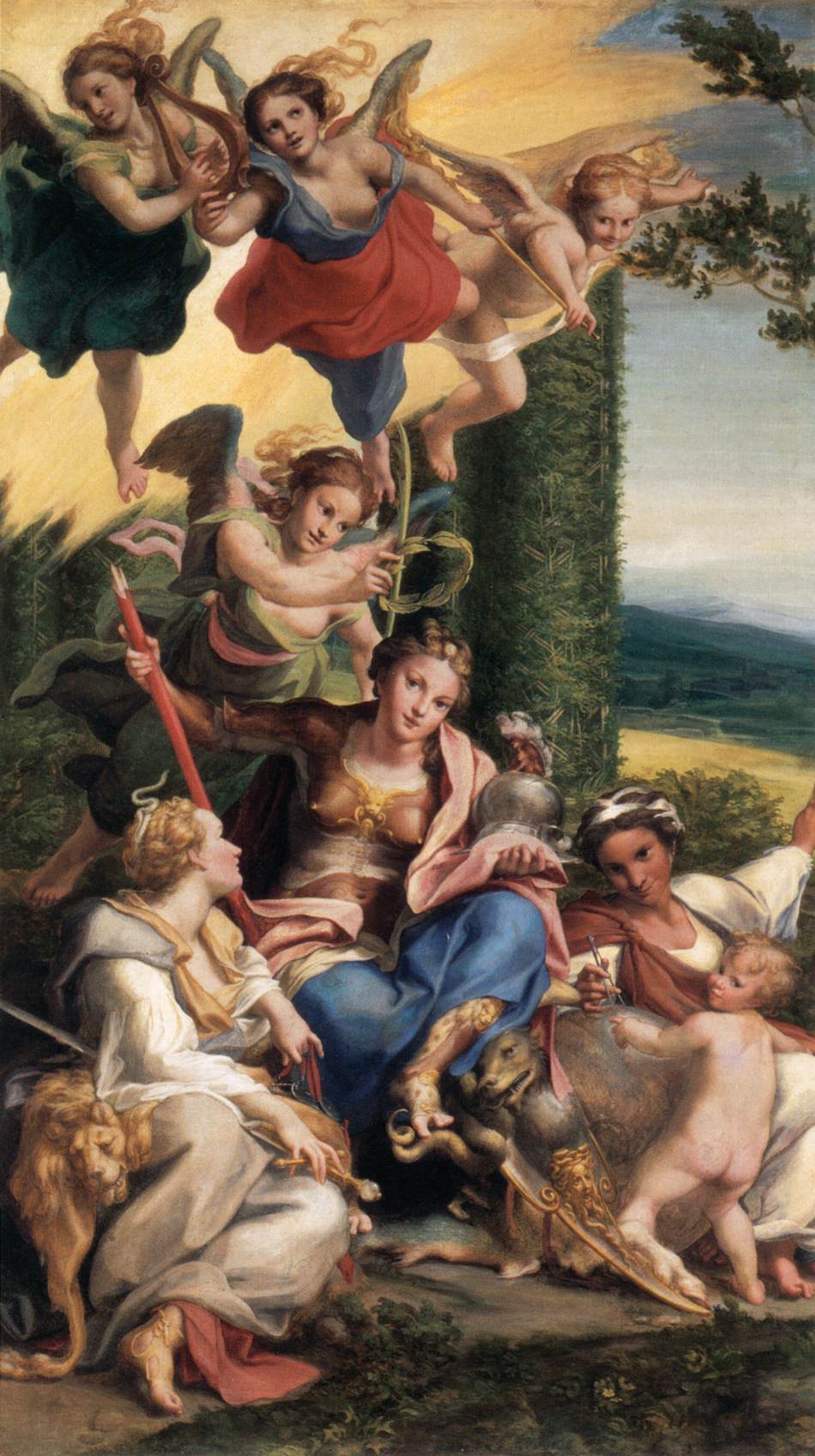Description
The Allegory of Virtues painting, by the Italian artist Correggio, is a Renaissance masterpiece noted for its innovative composition and use of colour. This work was created in the 16th century and measures 142 x 86 cm, making it a relatively small piece compared to other works of the time.
The painting represents an allegory of Christian virtues, with a central female figure representing Faith, surrounded by other figures representing Hope, Charity, Fortitude and Prudence. The composition of the painting is very interesting, since the figures seem to float in an imaginary space, without being subject to any law of gravity. In addition, the figure of Faith is in an elevated position, as if she were on a pedestal, which suggests her importance and her central role in the work.
Correggio's artistic style in this work is very distinctive, as he uses a technique called sfumato, which consists of blurring the edges of the figures to create an effect of softness and light. This can be clearly seen in the figure of Faith, who seems to be enveloped in a soft diffused light. In addition, the artist uses very bright and saturated colors, which creates an effect of vitality and energy in the work.
The history of the painting is interesting, as it is known that it was created for the church of San Giovanni Evangelista in Parma, Italy, but was later transferred to the collection of the Duke of Mantua. For centuries, the work was considered lost, until it was rediscovered in the 19th century in a private collection. Since then, it has been the object of study and admiration by art experts.
In summary, Correggio's Allegory of Virtues painting is a masterpiece of the Italian Renaissance that stands out for its innovative composition, its use of color and its sfumato technique. Its history and its importance in the world of art make it a work of great interest for lovers of art and culture.

